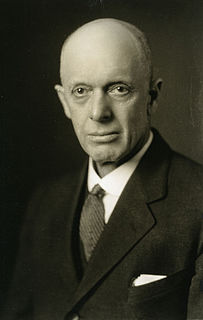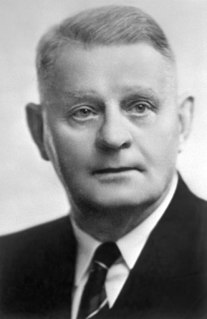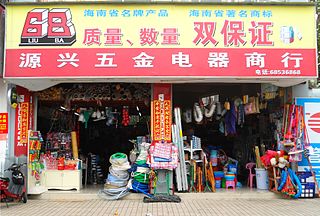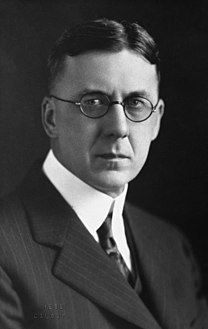| |||||||||||||||||||||||||||||||||||||||||||||||||||||||||||||||||||||||||||||
61 seats in the Legislative Assembly of Alberta 31 seats needed for a majority | |||||||||||||||||||||||||||||||||||||||||||||||||||||||||||||||||||||||||||||
|---|---|---|---|---|---|---|---|---|---|---|---|---|---|---|---|---|---|---|---|---|---|---|---|---|---|---|---|---|---|---|---|---|---|---|---|---|---|---|---|---|---|---|---|---|---|---|---|---|---|---|---|---|---|---|---|---|---|---|---|---|---|---|---|---|---|---|---|---|---|---|---|---|---|---|---|---|---|
| Turnout | not available [1] | ||||||||||||||||||||||||||||||||||||||||||||||||||||||||||||||||||||||||||||
| |||||||||||||||||||||||||||||||||||||||||||||||||||||||||||||||||||||||||||||
| |||||||||||||||||||||||||||||||||||||||||||||||||||||||||||||||||||||||||||||
The Alberta general election of 1921 was the fifth general election for the Province of Alberta, Canada. It was held on July 18, 1921, to elect members to the 5th Alberta Legislative Assembly. It was one of only four times that Alberta has changed governments.

Alberta is a western province of Canada. With an estimated population of 4,067,175 as of 2016 census, it is Canada's fourth most populous province and the most populous of Canada's three prairie provinces. Its area is about 660,000 square kilometres (250,000 sq mi). Alberta and its neighbour Saskatchewan were districts of the Northwest Territories until they were established as provinces on September 1, 1905. The premier has been Rachel Notley since May 2015.

Canada is a country in the northern part of North America. Its ten provinces and three territories extend from the Atlantic to the Pacific and northward into the Arctic Ocean, covering 9.98 million square kilometres, making it the world's second-largest country by total area. Canada's southern border with the United States is the world's longest bi-national land border. Its capital is Ottawa, and its three largest metropolitan areas are Toronto, Montreal, and Vancouver. As a whole, Canada is sparsely populated, the majority of its land area being dominated by forest and tundra. Consequently, its population is highly urbanized, with over 80 percent of its inhabitants concentrated in large and medium-sized cities, many near the southern border. Canada's climate varies widely across its vast area, ranging from arctic weather in the north, to hot summers in the southern regions, with four distinct seasons.
Contents
- The campaign
- Liberals
- United Farmers
- Split in the Labour forces
- Conservatives
- Socialist
- Calgary, Edmonton and Medicine Hat voters cast multiple votes
- The Aftermath
- Results
- Members elected
- Notes
- References
- External links
The Liberal Party, which had governed the province since its creation in 1905, led by Charles Stewart at the time of the election, was defeated by a very-new United Farmers of Alberta political party.
The Alberta Liberal Party is a provincial political party in Alberta, Canada. Founded in 1905, it was the dominant political party until the 1921 election, with the first three provincial Premiers being Liberals. Since 1921, it has formed the official opposition in the Legislative Assembly of Alberta several times, most recently from 1993 until 2012. Fourteen Liberals have served as Leader of the Opposition of Alberta.

Charles Stewart, was a Canadian politician who served as the third Premier of Alberta from 1917 until 1921. Born in Strabane, Ontario, in Wentworth County, Stewart was a farmer who moved west to Alberta after his farm was destroyed by a storm. There he became active in politics and was elected to the Legislative Assembly of Alberta in the 1909 election. He served as Minister of Public Works and Minister of Municipal Affairs—the first person to hold the latter position in Alberta—in the government of Arthur Sifton. When Sifton left provincial politics in 1917 to join the federal cabinet, Stewart was named his replacement.

The United Farmers of Alberta (UFA) is an association of Alberta farmers that has served different roles in its 100-year history – as a lobby group, a successful political party, and as a farm-supply retail chain. As a political party, it formed the government of Alberta from 1921 to 1935.
The UFA was an agricultural lobby organization that was contesting its first general election. It had one sitting MLA at the time of the election: Alex Moore (Cochrane). (The UFA was led by president Henry Wise Wood. After the UFA's victory, he declined to take the leadership of the government and become Premier. The UFA caucus's third choice, its vice president, Herbert Greenfield, who had not run as candidate in the election, agreed to do so, and sought election to the legislature in a by-election.)

Henry Wise Wood was an American-born Canadian agrarian thinker and activist. He became director in 1914 and was elected president of the United Farmers of Alberta in 1916. Under his leadership the UFA became the most powerful political lobby group in the province. In 1919, Wood oversaw the transition of the UFA into a political party and in 1921 they formed the government of Alberta, winning 38 of 61 seats in the Legislative Assembly. Wood refused to enter electoral politics himself but led the UFA's extra-parliamentary organization throughout, and influenced the elected government from the sidelines.

Herbert W. Greenfield was a Canadian politician who served as the fourth Premier of Alberta from 1921 until 1925. Born in Winchester, Hampshire, in England, he immigrated to Canada in his late twenties, settling first in Ontario and then in Alberta, where he farmed. He soon became involved in the United Farmers of Alberta (UFA), a farmers' lobby organization that was in the process of becoming a political party, and was elected as the organization's vice president. Greenfield did not run in the 1921 provincial election, the first provincial general election in which the UFA fielded candidates, but when the UFA won a majority in the Legislature in that election he was chosen by the UFA caucus to serve as Premier.
In a (weak) attempt at proportional voting, each voter in Edmonton and Calgary could vote for up to five candidates, while Medicine Hat voters could vote for up to two candidates. All other districts remained one voter – one vote. (By the time of the next election, a system of Single Transferable Voting was brought in, with more democratic results.)
Proportional representation (PR) characterizes electoral systems in which divisions in an electorate are reflected proportionately in the elected body. If n% of the electorate support a particular political party, then roughly n% of seats will be won by that party. The essence of such systems is that all votes contribute to the result - not just a plurality, or a bare majority. The most prevalent forms of proportional representation all require the use of multiple-member voting districts, as it is not possible to fill a single seat in a proportional manner. In fact, the implementations of PR that achieve the highest levels of proportionality tend to include districts with large numbers of seats.
No party ran a full slate of candidates. The UFA ran candidates in most of the rural constituencies, and one in Edmonton. The Liberal Party ran candidates in almost all the constituencies. The Conservatives ran a bare dozen candidates, mostly in the cities. Labour mostly avoided running against UFA candidates, by running candidates in the cities and in Rocky Mountain, where they counted on coal miners' votes.
The United Farmers took most of the rural seats, doing particularly well in the heavily Protestant south of the province. A majority of the votes in the constituencies where the UFA ran candidates went to the UFA.
Labour took five seats, two in Calgary. One Labour MLA was named to the UFA government cabinet, in a sort of coalition government. The Liberals took all the seats in Edmonton, due to the block-voting system in use. This multiple-vote system also skewed the vote count.












